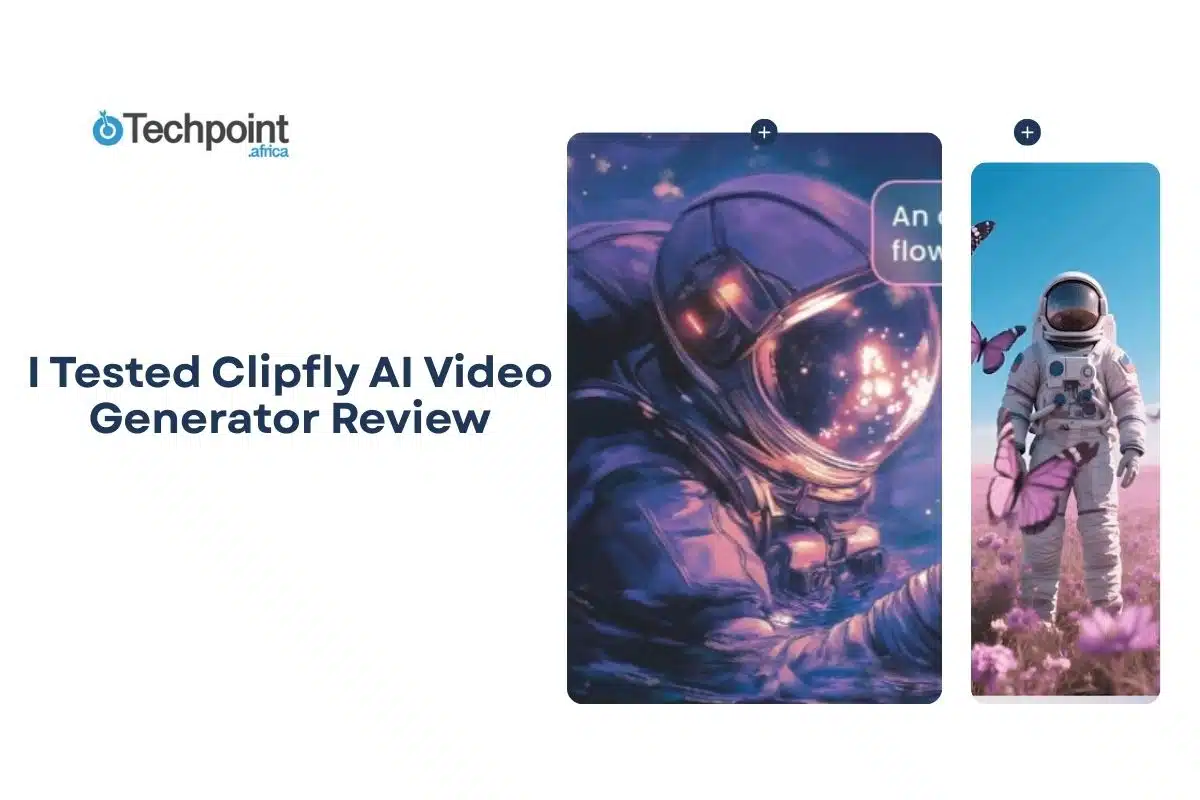Since AI has broken down the walls of traditional videography, creating videos has become incredibly easy. For creators on TikTok, YouTube Shorts, or Instagram, this reality makes video production faster and more accessible than ever.
One AI tool that ensures this is Clipfly AI, a free and fun video generator that simplifies the entire video creation process. By generating quick clips and experimenting with its various video generator modes, I tested this AI video generator and discovered its performance in real-world use.
In this review, you’ll learn about:
- Clipfly AI’s overview
- Clipfly AI Video Generator modes
- My real-world testing experiences and results
- Clipfly AI’s pricing and plans
- Clipfly AI’s pros and cons
- Clipfly AI’s target audience recommendations and best use cases
Here’s my detailed review.
Clipfly AI overview
Clipfly AI Video Generator is an all-in-one, web-based video creation platform that requires no hardware installation and works flawlessly across Android/iOS phones, Windows laptops, and macOS desktops. While Clipfly AI is built as a video generator, its distinction is placed on three complementary generation modes: Text to Video, Image to Video, and Element Combination.
Let’s break them down a bit.
The first mode, Text to Video, allows users to create short clips directly from written prompts. These prompts generate animated sequences with integrated voiceovers, captions, and background audio, making it perfect for converting ideas, scripts, or announcements into ready-to-share videos without needing image uploads.
The next option is Image to Video, which focuses on transforming a single image into a dynamic clip. The AI adds motion effects, such as panning and zooming, and integrates background audio when toggled on in the settings bar. Users can choose from its style collection for their result or keep it none.
Image-to-Video is handy for animating photographs, product shots, or other static visuals. It gives them movement and a storytelling edge while maintaining high visual quality.
The last mode, Element Combination, provides a channel for turning multiple images and text prompts into cohesive videos. Users get to use these elements (3 photos + a prompt), to create synced compositions generated with integrated motion and audio. This mode is well-suited for projects that require multiple visual components or narrative storytelling within a short video format.
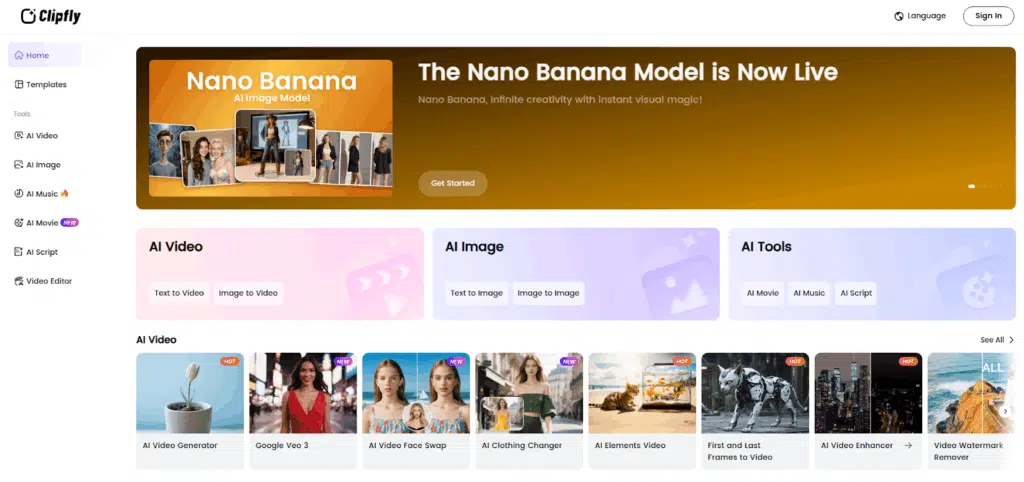
On the technical aspect of these modes, Clipfly AI offers three quality modes (Standard, Professional, and Premium), six models (Lumen, Flux, Cline, Creativity, Google Veo 3, and Google Veo 3 Fast), automatic camera movements, background music integration, customizable movement amplitude platform, editing tools and supports various aspect ratios (16:9, 1:1, 9:16).
The following section details my hands-on testing of each mode. It shows how Clipfly AI performs in practical video generation scenarios and highlights the platform’s capabilities across text, image, and element-based projects.
A comprehensive test of all Clipfly AI generation modes
As stated, Clipfly AI structures its video generator around Text-to-Video, Image-to-Video, and Element Combination. These modes follow different simple creation settings. You use them by entering a prompt, uploading files, and clicking on Generate Video, which results in a short clip, typically between 4 and 8 seconds, ideal for TikTok, YouTube Shorts, or Instagram Reels.
Here’s what happened when I tested each of them.
Text-to-video performance
The text-to-video feature impressed with its ability to generate product demonstrations. I used the prompt “Create a 6-second product demo for a new running shoe, with the CTA Buy Now!”
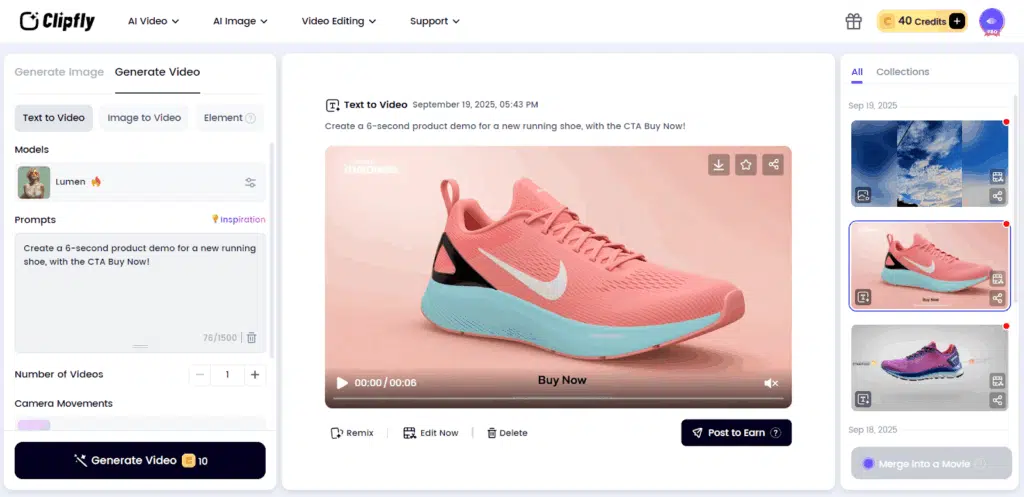
Before hitting the generate video button, I set the model to Lumen, modes to Standard, and camera movements to Auto.
Clipfly AI generated a coherent video featuring athletic footwear with smooth camera movements. This Lumen model handled the commercial-style content well, delivering professional-looking results that could be used for marketing purposes with additional refinement like a website link on the tagline “Buy Now”.
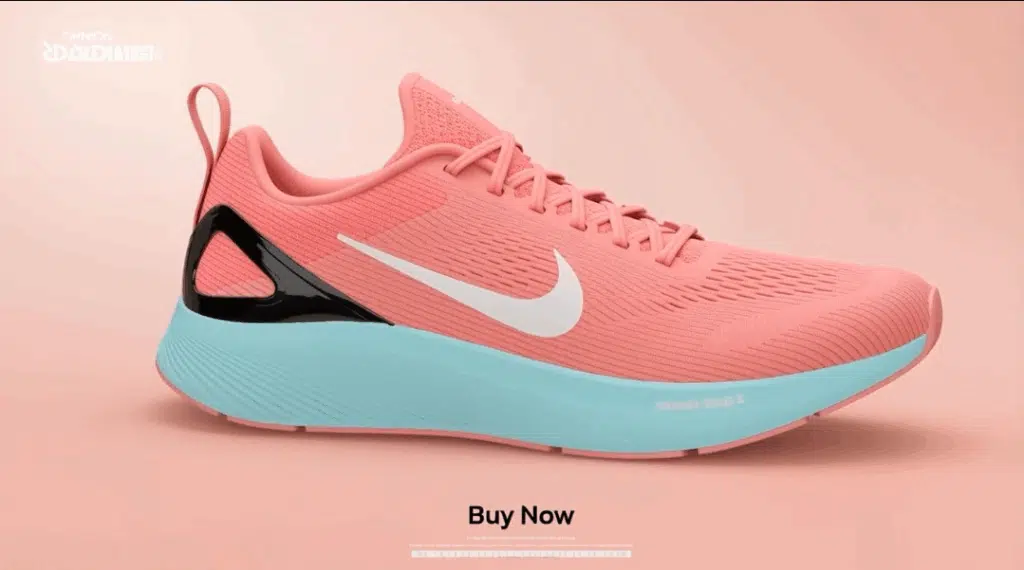
Image-to-video capabilities
The image-to-video mode showed strong performance in animating static images. Testing with a sky scene, I used the prompt “Animate the clouds in this image in seconds. Add soothing music to it.” The Creativity model successfully brought the clouds to life with natural movement, and the automatic background music feature added an appropriate atmospheric
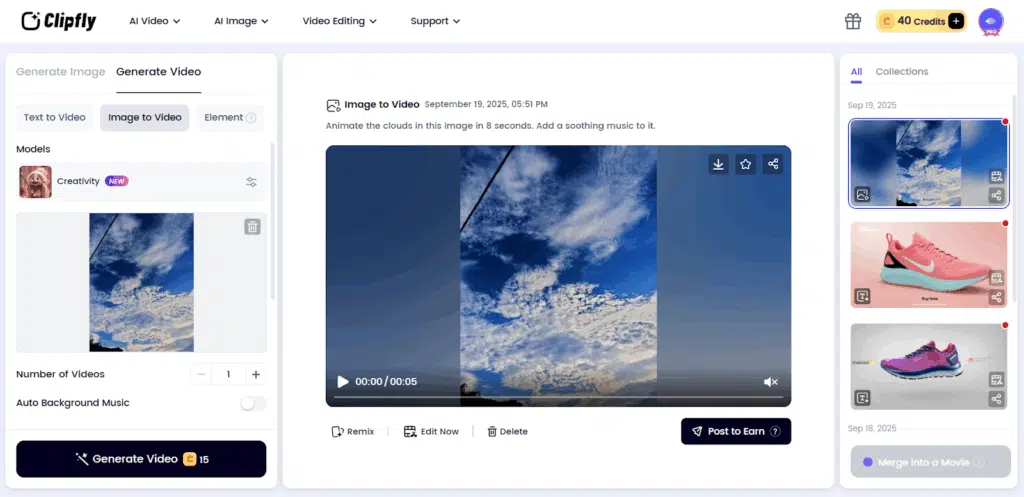
Element combination features
The element combination mode gave the most self-directive flair with its ability to merge multiple images into a cohesive video.
The element combination mode stood out for its ability to merge multiple images into cohesive video narratives. Testing with three distinct images of a fashionable woman, a crystal crown, and what appears to be a stage backdrop, I used the prompt ” The girl wearing fashionable clothes and a crystal crown, walking on a runway stage.”
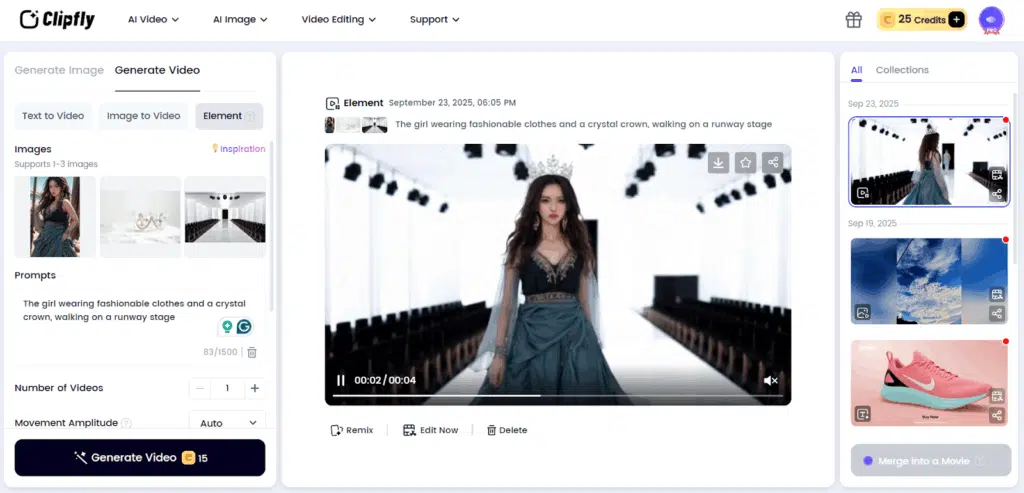
Clipfly AI successfully synthesized these separate elements into a unified scene, creating a fashion runway video that logically combined all three source images.
Clipfly AI’s pros and cons
Pros (things you’ll like)
- Clipfly AI is free for commercial use and has no watermarks.
- Clipfly AI interface is very beginner-friendly and easy to navigate.
- Broad styles, effects, and audio customization options shape videos to your taste.
- Multilingual support for text-to-speech and captions.
- Quick export of generated videos.
Cons (areas that could be improved on)
- Output may require refinement.
- Complex prompts can sometimes produce less accurate results.
Who should use Clipfly AI: target audiences and ideal use cases
- Social media influencers, educators, and trainers can use text-to-video to turn ideas or scripts into short clips. It allows for creating TikTok, YouTube Shorts, Instagram Reels, or educational videos without requiring images or complex editing.
- Image-to-Video works for e-commerce brands, small business owners, and marketers who want to animate product images or other visuals. The mode adds motion and background audio, making promotional content, advertisements, and social media posts more engaging.
- Element Combination is for freelance designers, storytellers, creative teams, and content studios who need to combine multiple images and text into one video. It can be used for storytelling, brand narratives, short campaigns, concept videos, or multi-scene presentations where several visual assets are integrated into a single clip.
Clipfly AI subscription plans
Clipfly offers a free version that provides access to most tools but has some limitations. For advanced features and more consistent performance, users can upgrade to Clipfly Pro, which costs $11.99 per month or $39.99 annually.
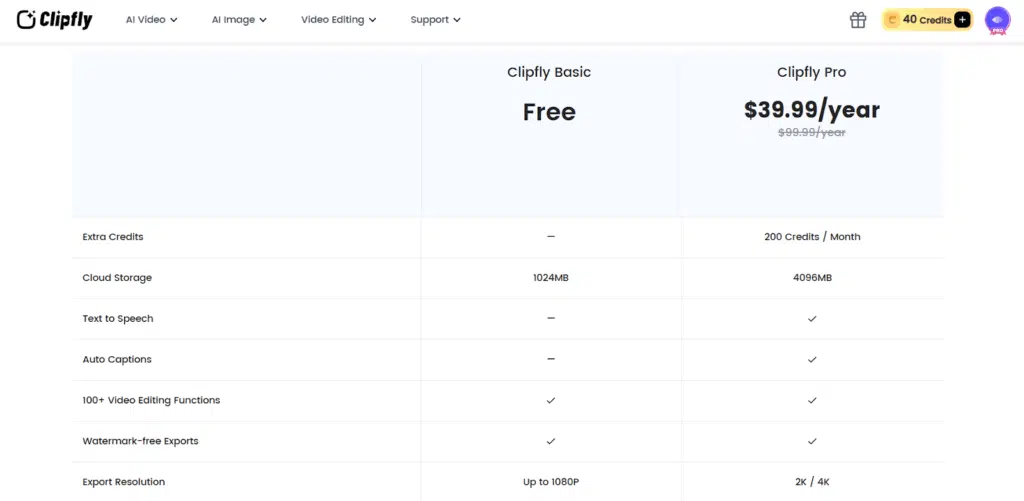
Considering the range of tools included, the Pro plan is competitively priced, especially for freelancers, small business owners, or marketers who regularly create short videos.
Final verdict
Clipfly AI delivers recommendable performance across all three generation modes, with great results in areas like commercial and personal content. Its interface is user-friendly, and the various models and customisation options provide good creative control.
While the output quality varies depending on prompt complexity, continual experimentation with more settings can give satisfying results.
Overall, Clipfly AI is an efficient tool for short video creators, freelancers, and marketers. Try Clipfly Free AI Video Generator for TikTok & YouTube Shorts.

